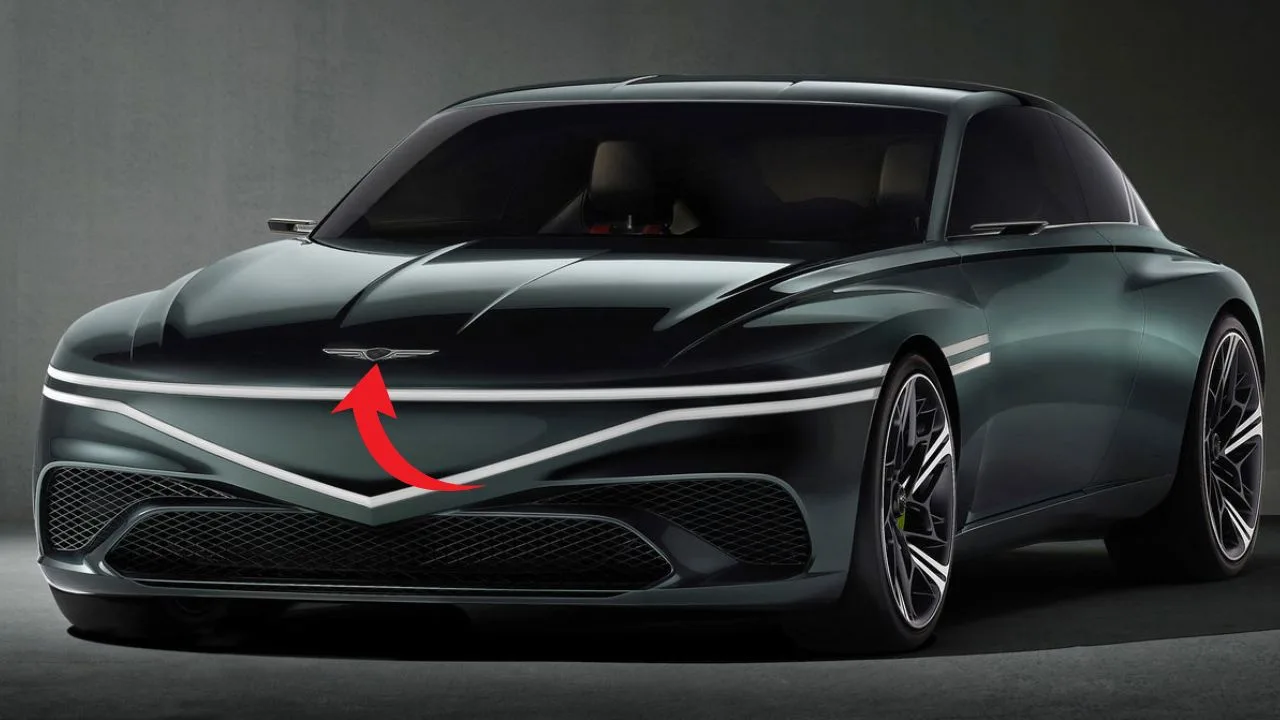The 2025 Genesis Electrified GV70, the electric version of Genesis’ acclaimed compact luxury SUV, has garnered attention for its blend of style, performance, and value. However, recent reports indicate a $7,000 price hike for the 2025 model compared to its 2024 predecessor, with starting prices now around $72,850 for the Advanced trim and up to $79,850 for the Prestige trim. This increase, driven by a larger 84-kWh battery, enhanced charging capabilities, and updated tech, has sparked debate about whether the Electrified GV70 remains a compelling choice in the competitive luxury electric SUV market. For buyers, including young Australians like 22-year-olds balancing budgets with Centrelink payments such as Youth Allowance, this price jump raises questions about value. This article evaluates the 2025 Genesis Electrified GV70’s upgrades, performance, and drawbacks to determine if the $7,000 increase is justified, comparing it to rivals like the Tesla Model Y, BMW iX, and Audi Q6 e-tron.
The $7,000 Price Hike: What’s New?
The 2025 Genesis Electrified GV70 introduces significant updates that contribute to its price increase from the 2024 model’s starting price of approximately $65,850. Key changes include:
-
Larger Battery and Improved Range: The 2025 model features an 84-kWh battery, up from 77.4-kWh, boosting the EPA-estimated range from 236 miles (380 km) to approximately 263 miles (423 km). While this falls short of rivals like the Tesla Model Y Long Range (320 miles) or BMW iX (up to 324 miles), the 27-mile increase enhances practicality for daily commutes and longer trips.

-
NACS Charging Port: The addition of a Tesla-compatible NACS (North American Charging Standard) port grants access to over 20,000 Tesla Superchargers, significantly expanding charging options in Australia and beyond. The vehicle supports 240 kW DC fast charging, achieving a 10–80% charge in 19 minutes, competitive with the Audi Q6 e-tron (270 kW).
-
Upgraded Interior Tech: A new 27-inch OLED display combines the infotainment and instrument cluster, offering crisp graphics and customizable widgets (e.g., sports scores). Additional features include a Bang & Olufsen premium audio system, active noise cancellation, and a head-up display on Prestige trims, enhancing the luxury experience.
-
Refined Design and Comfort: Exterior updates include a G-Matrix Crest Grille, Two-Line MLA headlamps, and 20-inch diamond-cut alloy wheels. Inside, Nappa leather with quilting, copper piping accents, and mountain graphic mood lighting elevate the cabin’s Bentley-esque ambiance.
-
Enhanced Safety and Driver Assists: The 2025 model retains its IIHS Top Safety Pick+ rating, with improved lane-keep assist using capacitive touch sensors. Standard features include adaptive cruise control, blind-spot monitoring, and evasive steering assist, with Prestige trims adding Remote Smart Parking Assist.
These upgrades aim to keep the Electrified GV70 competitive, but the $7,000 price increase pushes it closer to premium rivals like the BMW iX ($92,000+) and Audi Q6 e-tron ($80,000+), while still undercutting them slightly.
Performance: Power and Refinement
The 2025 Electrified GV70 retains its dual-motor all-wheel-drive setup, delivering 429 horsepower (483 hp in Boost mode) and 516 lb-ft of torque. It accelerates from 0–60 mph in 3.7 seconds with Boost mode, outpacing the gas-powered GV70 3.5T (4.6 seconds) and matching the Tesla Model Y Performance. Its handling is tidy, with ample grip and controlled body lean in Sport mode, though it’s less sporty than a Porsche Macan EV. The ride is smooth and quiet, thanks to an acoustic windscreen, laminated glass, and active noise cancellation, making it ideal for Australia’s highways.
However, the brake pedal feel is slightly sensitive, a common EV trait, and steering lacks the sharpness of a BMW X3 or Audi Q5. For young buyers, the exhilarating acceleration and serene cruising make it appealing, but the focus is on comfort over sportiness, aligning with its luxury ethos.
Range and Charging: A Mixed Bag
The 84-kWh battery’s 263-mile range is a notable improvement, but it lags behind competitors like the Polestar 3 (438 miles), Audi Q6 e-tron (391 miles), and Tesla Model Y Long Range (320 miles). Real-world testing by MotorTrend suggests a range closer to 200–225 miles for the 2024 model, and while the 2025’s larger battery may hit 250 miles, it’s still average for the class.
The NACS port is a game-changer, providing access to Tesla’s Supercharger network, which is critical in Australia where non-Tesla charging infrastructure is less developed. The 240 kW fast-charging capability ensures quick top-ups, and a standard heat pump improves range in cold climates, relevant for southern Australia. Buyers receive a choice between a ChargePoint Home Flex Level 2 charger or a $500 charging credit, easing home charging costs (estimated at $1,616 for installation).
For 22-year-olds on Youth Allowance ($670.30 fortnightly), the range may suffice for urban commutes, but frequent long trips could require careful planning, especially in regional areas with limited chargers.
Interior and Technology: Luxury on a Budget
The Electrified GV70’s cabin is a standout, rivaling pricier SUVs like the Mercedes-Benz EQC. Nappa leather, quilted stitching, and soft-touch materials create a premium feel, with the Glacier White two-tone interior adding sophistication. The 27-inch OLED display is intuitive, supporting wireless Apple CarPlay and Android Auto, though the touchscreen’s reach can be awkward, mitigated by a rotary controller (sometimes confused with the gear selector).
Cargo space (28.7 cubic feet behind the second row, 56.5 with seats folded) is competitive but average, and rear legroom is tighter than the gas-powered GV70 or Tesla Model Y. For young buyers, the luxurious interior and tech (e.g., Bang & Olufsen audio, mood lighting) justify the price, but the compact rear seat may limit family appeal.
Value Proposition and Warranty
Despite the $7,000 hike, the Electrified GV70 remains a value leader. Starting at $72,850, it undercuts the BMW iX ($92,000) and Audi Q6 e-tron ($80,000) while offering comparable luxury and features. The gas-powered GV70 2.5T starts at $49,435, making the EV $23,415 pricier, a gap that requires weighing electric benefits like lower running costs (3 miles per kWh) against the higher upfront cost.
Genesis’ warranty is unmatched: a 5-year/60,000-mile limited warranty, 10-year/100,000-mile powertrain warranty, and 3-year/36,000-mile complimentary maintenance. This beats competitors like the Jaguar I-Pace or Tesla Model Y, offering peace of mind for budget-conscious buyers. Additionally, Genesis Concierge provides at-home test drives and valet servicing, enhancing the ownership experience.
Comparison to Rivals
-
Tesla Model Y Long Range ($52,000): Offers a 320-mile range, larger cargo space, and access to Superchargers but lacks the GV70’s luxurious interior and ride quality. The Model Y’s minimalist cabin and firm ride may deter buyers seeking premium comfort.
-
BMW iX ($92,000): Boasts a 324-mile range and superior handling but costs $20,000 more. Its interior is less distinctive than the GV70’s, and charging access is less extensive without NACS.
-
Audi Q6 e-tron ($80,000): Matches the GV70’s refinement with a 391-mile range but is pricier. Its handling is comparable, but the GV70’s warranty and lower price give it an edge.
-
Lexus RZ ($60,000): Offers similar luxury but a shorter 220-mile range. It’s less powerful (313 hp) and lacks the GV70’s fast-charging speed.
For Australian buyers, the GV70 EV’s lower price and Tesla charger access make it competitive, though its range trails top rivals.
Is the Price Hike Worth It?
The $7,000 increase is driven by tangible upgrades: a larger battery, NACS charging, advanced tech, and refined styling. These enhance the GV70 EV’s appeal, particularly for urban buyers who value luxury and fast charging over maximum range. The 263-mile range suits daily commutes (e.g., 30–50 km in Australian cities), and the Supercharger network mitigates range anxiety. The warranty and low running costs (3 miles per kWh) appeal to young buyers, though the upfront cost may strain budgets for those on Youth Allowance ($17,428 annually).
However, the range shortfall compared to the Tesla Model Y or Audi Q6 e-tron is a drawback, especially for regional drivers. The gas-powered GV70 2.5T, at $23,415 less, may be more practical for those not ready for EV infrastructure challenges. Insurance costs (e.g., $2,768–$3,047 annually) and home charging setup ($1,616) add to the financial burden.
Considerations for Young Buyers
For 22-year-olds, the Electrified GV70’s price is a stretch, especially with Youth Allowance providing $670.30 fortnightly. However, part-time work (eligible for SG contributions above $450 monthly) and Centrelink’s $1,000 hardship payment could offset costs. The EV’s low running costs (e.g., $0.10–$0.15 per km vs. $0.25 for petrol) and free maintenance for three years make it viable for those with stable incomes. Buyers should verify eligibility for EV subsidies (e.g., Australia’s Electric Car Discount) and use myGov to manage Centrelink payments.
Looking Forward
The 2025 Genesis Electrified GV70’s $7,000 price hike is largely justified by its larger battery, NACS charging, and enhanced tech, maintaining its position as a value-driven luxury EV. Its 263-mile range, while improved, trails rivals, but the Supercharger access and fast charging make it practical for urban Australians. The luxurious cabin, stellar warranty, and refined performance outweigh minor drawbacks like rear seat space and brake feel. For 22-year-olds or budget-conscious buyers, the gas-powered GV70 may be more affordable, but the EV’s long-term savings and eco-credentials make it a compelling choice if finances allow. Verify EV incentives and payment updates at www.servicesaustralia.gov.au, and explore Genesis Concierge for test drives to decide if the $7,000 hike fits your needs.

